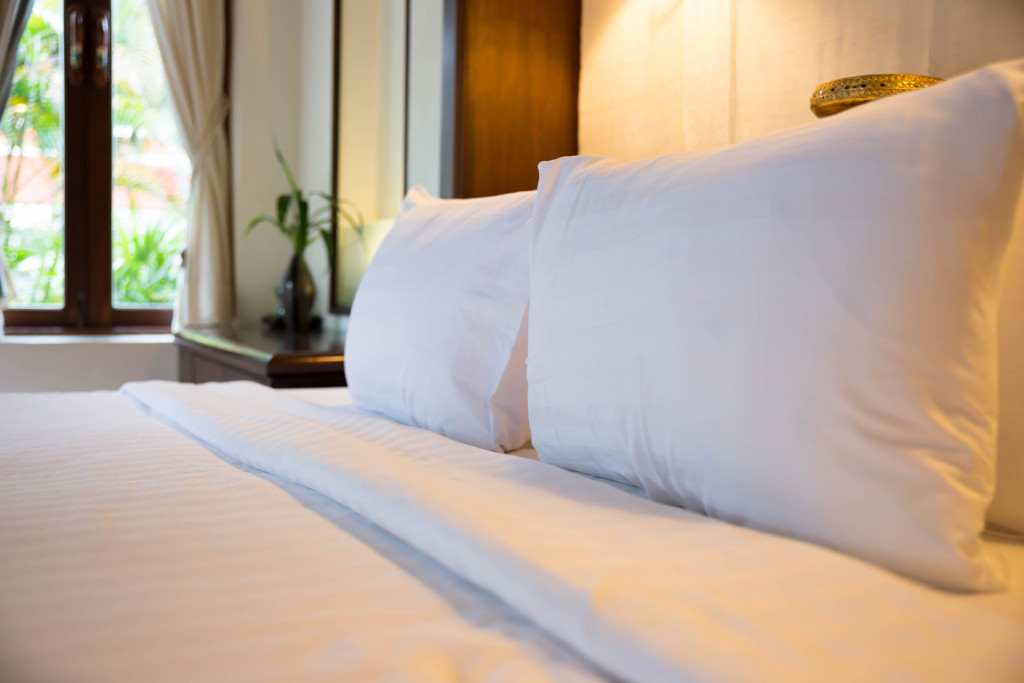Indoor allergens can take the form of dust, dust mites, pet dander, and even cockroach droppings. All of these can trigger allergy and asthma symptoms in both children and adults. As most of these can be carried through the air, they can be found on almost every household surface. Furniture, floors, beds, and chairs are all unassuming vectors for setting off an allergy attack.
You might not be able to make your home fully allergen-proof, but you can reduce the impact of these allergens and their number by adding some smart cleaning solutions to your regular chore routine.
Your Vacuum Is Your Best Defender
Your vacuum is your first line of defense against most types of allergens that trigger asthma attacks. Regularly vacuum under chairs, in hallways, and corners where dust can accumulate. If your pets shed heavily, you might want to get a handheld vacuum just to keep their dander in check.
Do your research and find out the best kind of vacuum for your needs. If you are prone to pollen-induced allergy reactions, a vacuum with a HEPA filter will be especially useful. Most vacuum manufacturers offer a variety of options for different needs and will freely share this information. Also, brands like Dyson offer repair and warranty options that will help keep your vacuum in good condition for many years.
Dust the Right Way
If you are looking to reduce the chances of triggering asthma or allergy attack, you must learn to dust differently. Most ways of dusting simply sweep dust off surfaces and into the air. This simply makes it easier for the dust to enter your airways and settle on other surfaces.
First, reduce clutter to give dust fewer surfaces to collect on and accumulate. Then, invest in a humidifier with a cleaning function. This type of humidifier will attract dust particles and trap them inside and make the air within your home cleaner.
Lastly, wear a dust mask and use a damp cloth to wipe the dust off surfaces. This way, you reduce your exposure and also ensure that the dust does not escape.
Clean Bedding and Covers Often to Reduce Dust Mites
 The most common trigger for allergy attacks is dust mites. Changing the way you dust will help reduce their number, but they are everywhere and quite hardy.
The most common trigger for allergy attacks is dust mites. Changing the way you dust will help reduce their number, but they are everywhere and quite hardy.
They can be found on all the surfaces which you are most likely to frequent, such as your bed, pillows, and sofa cushions. Wash and dry all pillowcases, sheets, cushion covers, and soft toys at least once a week to get rid of these mites. High heat is very effective in destroying the mites, so make sure to use bedding that can withstand hot water and driers. Consider getting hypoallergenic bedding just to be on the safe side.
Regularly Check for Mold Growth
Because you keep a clean home, you might think that you are safe from mold. But, mold tends to grow in the hidden damp spaces we overlook in regular cleaning. Be especially vigilant of your bathroom, basement, and attic space. Even if the mold is growing in an out-of-the-way place, the spores can travel through your ventilation system and trigger asthma attacks.
To reduce the risk of mold growth, try to reduce the chances of damp spaces. Air out bathrooms after showers and wipe down wet surfaces. Consider removing wallpaper and rugs in or around the bathroom and kitchen sink as these can attract mold spores.
Consider Using Sustainable Cleaning Products
Unfortunately, most types of mass-produced cleaning products contain chemicals that can trigger allergy attacks as well. You can use gloves and a mask while cleaning, but why take such a risk all the time?
Switch to sustainable cleaning products for regular use and keep the industrial-strength products for more thorough spring cleans.
There are different environmentally friendly cleaning products available now and can be purchased easily from specialty stores or online. Common household items like baking soda and vinegar can also be used for cleaning and leave behind little chance of aggravating any allergy conditions.
These are all useful tips for every day, but certain times of the year can be quite difficult for allergy sufferers. Try to avoid going outside during the early morning as plants release pollen around this time. Remove your shoes and shower soon after coming home as this can reduce the amount of pollen you bring inside the house.
If you stay vigilant and have a regular cleaning schedule, your home can be your haven. Breathe easy and relax in your home knowing that you have made it a safe space for yourself and your family.



















